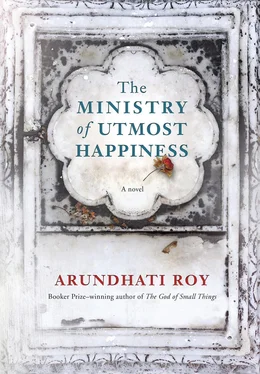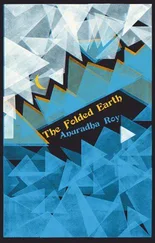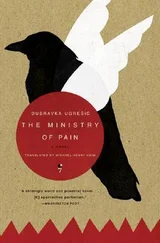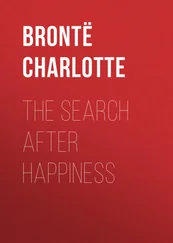—
The morning after Bakr-Eid, Jannat Guest House received its second permanent guest — a young man who called himself Saddam Hussain. Anjum knew him a little and liked him a lot, so she offered him a room at a rock-bottom price — less than it would have cost him to rent one in the old city.
When Anjum first met Saddam he worked in the mortuary. He was one of about ten young men whose job it was to handle the cadavers. The Hindu doctors who were required to conduct post-mortems thought of themselves as upper caste and would not touch dead bodies for fear of being polluted. The men who actually handled the cadavers and performed the post-mortems were employed as cleaners and belonged to a caste of sweepers and leatherworkers who used to be called Chamars. The doctors, like most Hindus, looked down on them and considered them to be Untouchable. The doctors would stand at a distance with handkerchiefs masking their noses and shout instructions to the staff about where incisions were to be made and what was to be done with the viscera and the organs. Saddam was the only Muslim among the cleaners who worked in the mortuary. Like them, he too had become something of an amateur surgeon.
Saddam had a quick smile and eyelashes that looked as though they had worked out in a gym. He always greeted Anjum with affection and often ran little errands for her — buying her eggs and cigarettes (she trusted nobody with her vegetable shopping) or fetching a bucket of water from the pump on the days she had a backache. Occasionally, when the workload at the mortuary was less hectic (usually September to November, when people on the streets were not dying like flies of the heat, the cold, or dengue), Saddam would drop in, Anjum would make him tea and they’d share a cigarette. One day he disappeared without leaving word. When she asked, his colleagues told her he had had a run-in with one of the doctors and been fired. When he reappeared that morning after Eid, a whole year later, he looked a little gaunt, a little battered, and was accompanied by an equally gaunt and battered white mare whose name he said was Payal. He was dressed stylishly, in jeans and a red T-shirt that said Your Place or Mine? He wore his sunglasses even when he was indoors. He smiled when Anjum teased him but he said it didn’t have anything to do with style. He told her the strange story of how his eyes had been burned by a tree.
After he was fired from the mortuary, Saddam said, he drifted from job to job — he worked as a helper in a shop, a bus conductor, selling newspapers at the New Delhi railway station and finally, in desperation, as a bricklayer on a construction site. One of the security guards at the site became a friend and took Saddam to meet his boss, Sangeeta Madam, in the hope that she might give him a job. Sangeeta Madam was a plump, cheerful widow who, notwithstanding her jolly-type personality, and her love for Bollywood songs, was a tough-hearted labor contractor whose security company, Safe n’ Sound Guard Service (SSGS), controlled a pool of five hundred security guards. Her office, in the basement of a bottle factory, was in the new industrial belt that had sprung up on the outskirts of Delhi. The men on her roster had a twelve-hour working day and a six-day week. Sangeeta Madam’s commission was 60 percent of their salary, which left them with barely enough for food and a roof over their heads. Still they flocked to her in their thousands — retired soldiers, laid-off workers, trainloads of desperate villagers freshly arrived in the city, educated men, illiterate men, well-fed men, starving men. “There were many security companies whose offices were all next to each other,” Saddam told Anjum. “What a sight we made on the first of every month when we went to collect our pay…thousands of us…You got the feeling that there were only three kinds of people in this city — security guards, people who need security guards, and thieves.”
Sangeeta Madam was among the better paymasters. So she had her pick of the men. She recruited the ones who looked relatively less malnourished and gave them half a day’s training — basically, she taught them how to stand straight, how to salute, how to say “Yes, sir,” “No, sir,” “Good morning, sir” and “Goodnight, sir.” She equipped them with a cap, a pre-knotted tie that came on an elastic loop, and two sets of uniforms with SSGS embroidered on the epaulettes. (They had to pay a deposit worth more than the price of the uniforms in case they ran off without returning them.) She spread her little private army across the city. They guarded homes, schools, farmhouses, banks, ATMs, stores, malls, cinema halls, gated housing communities, hotels, restaurants and the embassies and high commissions of poorer countries. Saddam told Sangeeta Madam that his name was Dayachand (because every idiot knew that in the prevailing climate a security guard with a Muslim name would have been considered a contradiction in terms). Being a literate, pleasant-looking man in good health, he got the job easily. “I’ll be watching you,” Sangeeta Madam told him on his very first day, looking him up and down appreciatively. “If you can prove you are a good worker, I’ll make you a supervisor in three months.” She sent him out as one of a team of twelve men to the National Gallery of Modern Art where one of India’s most famous contemporary artists, a man from a small town who had risen to international stardom, was holding a solo show. The security for the show had been subcontracted to Safe n’ Sound.
The exhibits, everyday artifacts made of stainless steel — steel cisterns, steel motorcycles, steel weighing scales with steel fruit on one side and steel weights on the other, steel cupboards full of steel clothes, a steel dining table with steel plates and steel food, a steel taxi with steel luggage on its steel luggage rack — extraordinary for their verisimilitude, were beautifully lit and displayed in the many rooms of the gallery, each room guarded by two Safe n’ Sound guards. Even the cheapest exhibit, Saddam said, was the price of a two-bedroom LIG (Lower Income Group) flat. So, all put together, according to his calculations, they cost as much as a whole housing colony. Art First , a cutting-edge contemporary art magazine owned by a leading steel magnate, was the main sponsor of the show.
Saddam (Dayachand) was given sole charge of the signature exhibit in the show — an exquisitely made half-scale, but absolutely life-like, stainless-steel Banyan tree, with stainless-steel aerial roots that hung all the way down to the ground, forming a stainless-steel grove. The tree came in a gigantic wooden crate, shipped in from a gallery in New York. He watched it being un-crated and placed on the lawns of the National Gallery, secured with underground bolts. It had stainless-steel buckets, stainless-steel tiffin carriers and stainless-steel pots and pans hanging from its branches. (Almost as though stainless-steel laborers had hung up their stainless-steel lunches while they plowed stainless-steel fields and sowed stainless-steel seeds.)
“That part I just didn’t understand,” Saddam told Anjum.
“And the rest you did?” Anjum asked, laughing.
The artist, who lived in Berlin, had sent strict instructions that he did not want any kind of protective fence or cordon to be built around the tree. He was keen for viewers to commune with his work directly, without any barriers. They were to be allowed to touch it and to wander through the grove of roots if they wanted to. Most of them did, Saddam said, except when the sun was high and the steel was burning hot to the touch. Saddam’s job was to make sure nobody scratched their names into the steel tree or damaged it in any way. It was also his responsibility to keep the tree clean and to make sure the imprints from the hundreds of hands that touched it were wiped away. For this task he was given a specially designed ladder, a supply of Johnson’s Baby Oil and fragments of old, soft saris. It seemed an improbable method, but it actually worked. Cleaning the tree was not a problem, he said. The problem was keeping an eye on it when the sun reflected off it. It was like being asked to keep an eye on the sun. After the first two days Saddam asked Sangeeta Madam for permission to wear sunglasses. She turned down his request, saying it would look inappropriate and the museum management was bound to take offense. So Saddam developed a technique of looking at the tree for a couple of minutes and then looking away. Still, by the time seven weeks had passed and the tree was re-crated and shipped to Amsterdam for the artist’s next show, Saddam’s eyes were singed. They smarted and watered continuously. He found it impossible to keep them open in daylight unless he used sunglasses. He was dismissed from Safe n’ Sound Guard Service because nobody had any use for an ordinary security guard who dressed as though he was a film star’s bodyguard. Sangeeta Madam told him he was a great disappointment to her and had completely belied her expectations. His response was to call her some terrible names. He was physically ejected from her office.
Читать дальше












